Explore the future of cancer treatment at the Australian Bragg Centre, where a revolutionary design by Woods Bagot integrates cutting-edge proton therapy with patient-centric features, including natural light and adaptive Verosol blinds, creating a space that merges innovation and empathy for a holistic healing journey.

March 4th, 2024
For cancer patients, the degree of uncertainty in the treatment journey is profoundly stressful. A conscious empathy for this emotional and psychological challenge underlies the design approach Woods Bagot has embedded in the new Australian Bragg Centre, a ground-breaking clinical and research facility within Adelaide’s health and biomedical precinct.
The 15-level, 32,000 square metre building is home to Australia’s first proton therapy unit, located in three underground levels. This form of treatment is a non-invasive and highly targeted radiotherapy for inoperable tumours that was previously unavailable in Australia. It is particularly suitable for children and adolescents as it minimises radiation damage to body cells adjacent to a tumour.
Recognising that younger patients have elevated needs for calm, comfort and security, Woods Bagot has ensured the above-ground patient levels incorporate abundant natural light, biophilic curves and warm timber materials, spaces that feel restful, areas for privacy, and areas where patients, carers and Bragg Centre staff can converge organically.

The Bragg Centre has a crystalline façade appearance that compliments the adjacent textured diagrid of SAHMRI (the South Australian Health and Medical Research Centre). Like SAHMRI, the Bragg Centre is also targeting a LEED rating.
To achieve LEED Gold, design and materiality must achieve exemplary energy-efficiency and indoor environment quality, including reduction of airborne pollutants such as Volatile Organic Compounds (VOCs) which may be off-gassed from materials.
Woods Bagot Principal and project lead Thomas Masullo said the project was approached using the practice’s ‘People Architecture’ philosophy.
The challenge was to encourage energy efficiency in dry laboratories and clinical trial zones through a whole-building approach that enables occupants to improve the efficiency of the entire facility.

“This was achievable by the passive design of the floor plates with a central core that responded to the internal programme,” Masullo explains.
The design promotes occupant comfort, well-being and productivity through initiatives including the resolution of the façade, which features glazing performance and shading solutions designed to improve daylight, reduce heat gain and solar glare and maintain visual connection to the external environment. “The SAHMRI atrium spanning four levels which is located along the northern façade overlooking the River Torrens and Adelaide Oval was a space that was heavily considered during the design process to ensure that the internal environment was a comfortable experience and highly sought-after informal workspace for the SAHMRI staff,” Masullo says.


Verosol blinds play a crucial role in providing the appropriate balance between outlook, daylight, human comfort, safety and privacy where required. Tom Reid, Managing Director at Specialty Curtains and Blinds, explains that 944 motorised Verosol blinds in total, comprising 16 Veromax Roller blinds and 928 Ambience Roller Blinds encompassing both single & multi-link systems, were installed for the project.

As Verosol’s commercial partner for this project, Specialty Curtains and Blinds were also able to work with the architect to provide additional advice and assistance for the void area, where a heavy-duty blind system was needed that could operate effectively with an 8m drop.
From levels 3 to 14, Verosol Ambience motorised wire-guided roller blinds using 103 SilverScreen Earth semi-transparent metallised fabric in colour 0031-White have been utilised along the façade line across the entire building. Motorised for ease and in conjunction with the perforated sun shading fins on the façade exterior, the semi-transparent SilverScreen blinds dramatically reduce solar heat gain and interior glare, while still enabling natural light and views to be accessible inside every room and space.
“The blinds with their woven screen-like construction and textile-like appearance provide excellent vision out, and dramatically reduces heat and glare at the windows,” Reid says.

Verosol’s 103 SilverScreen Earth metallised fabric delivers 62% solar reflectance to reduce the blazing heat of the South Australian sun, while the fire-retardant properties and the PVC-free materiality also addresses the need for a safe and healthy indoor environment.
Masullo notes that providing a “healthy composition” option for the blind materiality was critical due to the clinical nature of the building and its location within the BioMedical Precinct along North Terrace.
For the level 4 Clinical Trials Consulting rooms, where patient privacy is paramount, motorised Ambience roller blinds using 737 Veropaque G3 – Blockout 7000 Black Beige fabric were installed, encouraging a sense of security and calm at a time that is extremely stressful for patients.
There is a strong alignment between the essence of the Verosol blinds, which equip occupants with the means to adjust their environment, and the manner in which advanced healthcare relates to patients.
There are “certain similarities in terms of dynamic responsiveness to various conditions and physical engagement,” Masullo says.
“Just as blinds adapt to light, heat and occupant needs, healthcare responds to patients’ diverse needs, medical conditions, and environmental factors. Just as blinds aim to create a comfortable environment, healthcare as a practice and system, strives to provide holistic care to enhance patients’ wellbeing.”



INDESIGN is on instagram
Follow @indesignlive
A searchable and comprehensive guide for specifying leading products and their suppliers
Keep up to date with the latest and greatest from our industry BFF's!
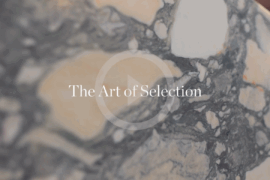
CDK Stone’s Natasha Stengos takes us through its Alexandria Selection Centre, where stone choice becomes a sensory experience – from curated spaces, crafted details and a colour-organised selection floor.
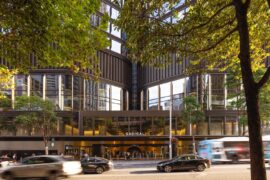
Rising above the new Sydney Metro Gadigal Station on Pitt Street, Investa’s Parkline Place is redefining the office property aesthetic.
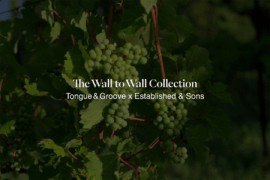
London-based design duo Raw Edges have joined forces with Established & Sons and Tongue & Groove to introduce Wall to Wall – a hand-stained, “living collection” that transforms parquet flooring into a canvas of colour, pattern, and possibility.
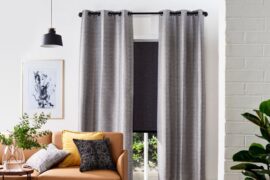
A lighter, roomier feel in your space can start at your window.

Across four decades, Leone Lorrimer LFRAIA GAICD reshaped Australian architecture through strategic vision, global influence and fearless leadership.

Rising above the new Sydney Metro Gadigal Station on Pitt Street, Investa’s Parkline Place is redefining the office property aesthetic.

Central Station by Woods Bagot in collaboration with John McAslan + Partners has been named one of two joint winners of The Building category at the INDE.Awards 2025. Recognised alongside BVN’s Sirius Redevelopment, the project redefines Sydney’s historic transport hub through a transformative design that connects heritage with the demands of a modern, growing city.
The internet never sleeps! Here's the stuff you might have missed
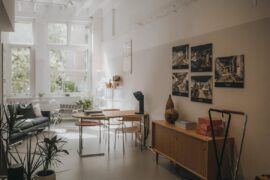
Sydney’s newest design concept store, HOW WE LIVE, explores the overlap between home and workplace – with a Surry Hills pop-up from Friday 28th November.

For a closer look behind the creative process, watch this video interview with Sebastian Nash, where he explores the making of King Living’s textile range – from fibre choices to design intent.